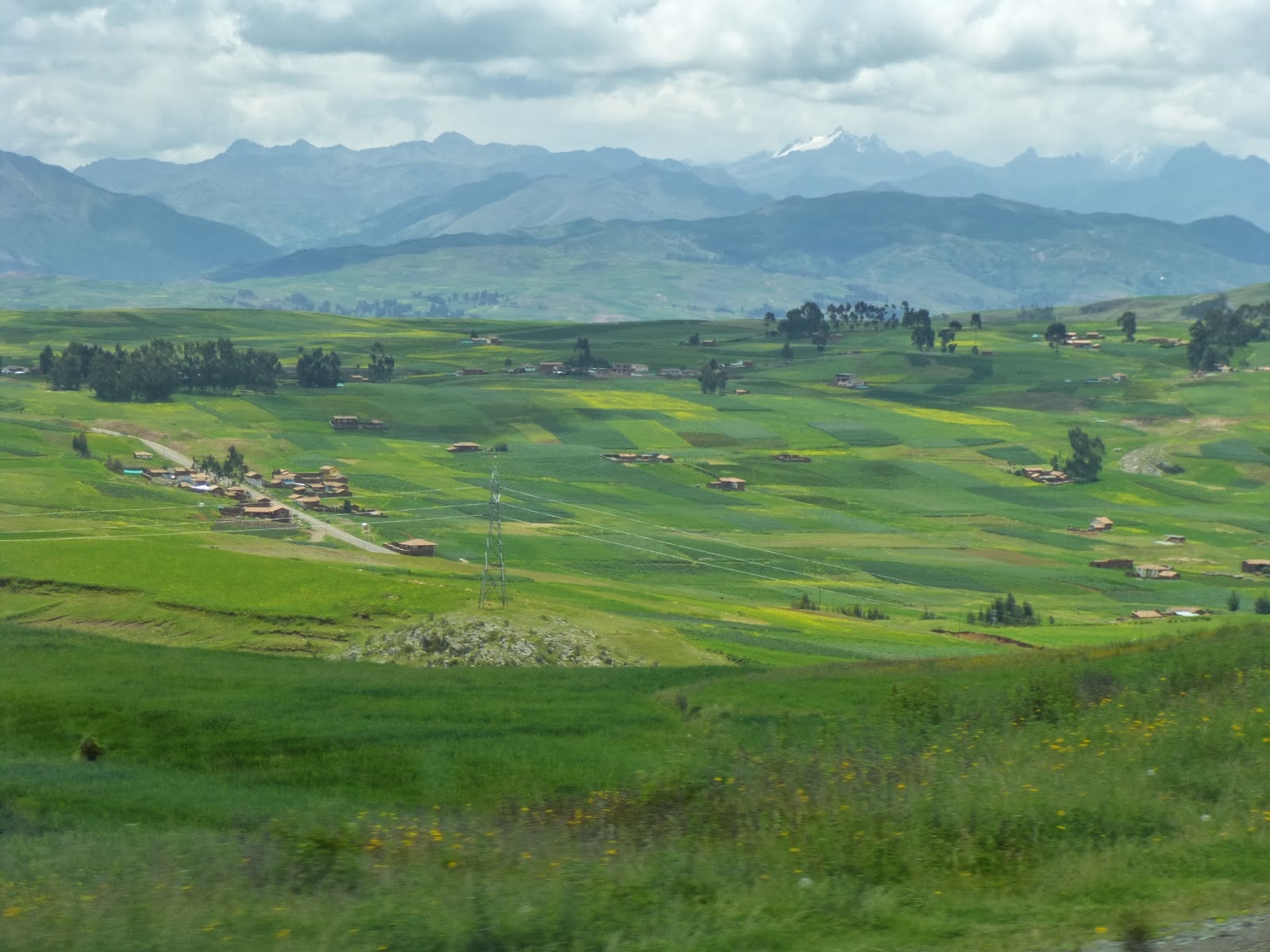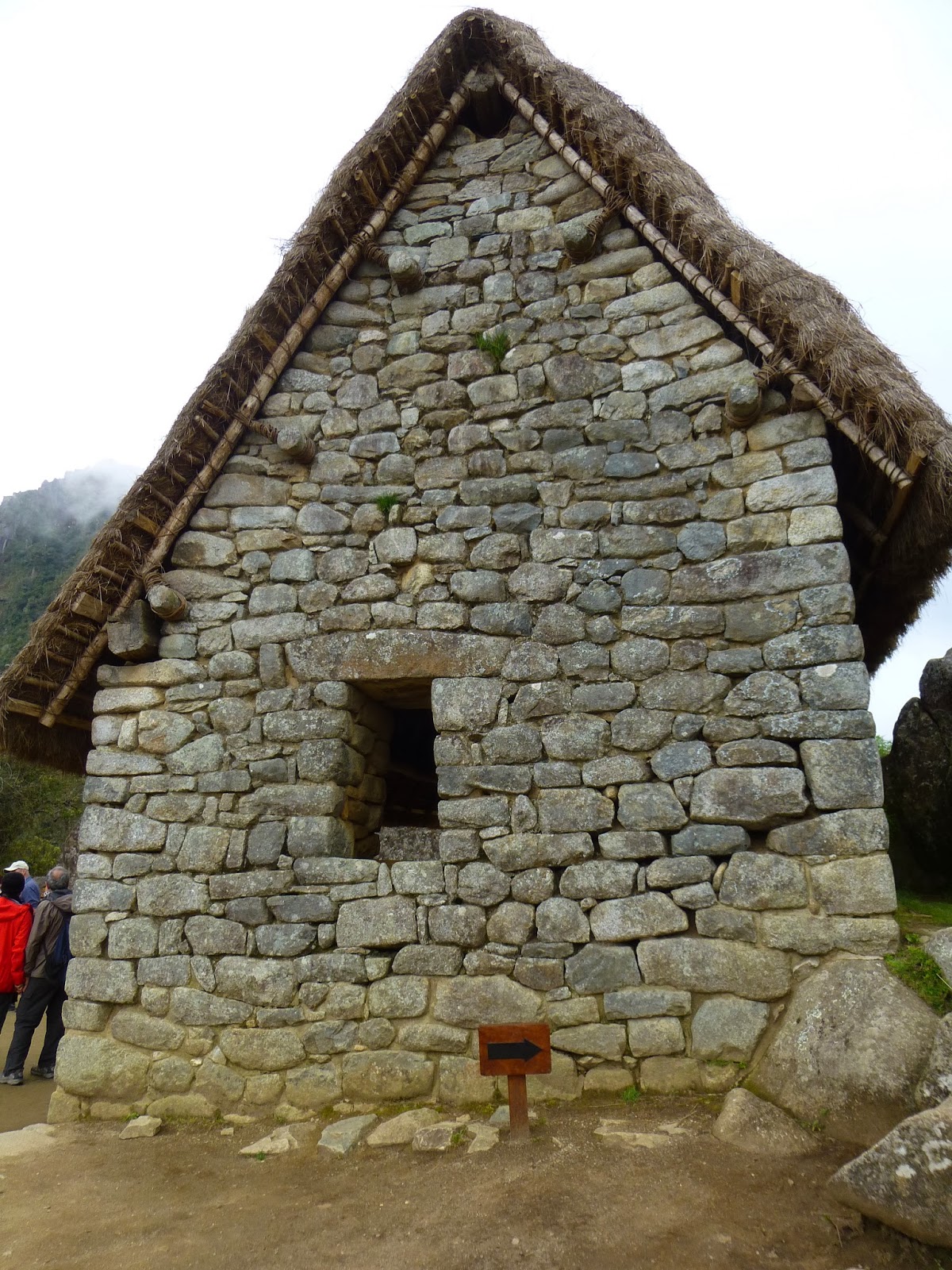We had a wonderful trip to Peru, returning via the La Paz area of Bolivia - and I took almost 1,000 pictures during the 7 days we were gone. I thought I could pare things down and report half our trip in this first blog, but when I started trying to leave things out, I just couldn't make myself do it. SO . . . today I'm just going to report on the trip from Cochabamba to and including Machu Picchu - and spread this whole thing out over several blog entries. If it's a nuisance for you-all to keep checking back, I'm sorry . . . but this is our trip journal, too and we want it to be somewhat complete. So here goes . . .
I should explain first - there was a mix-up with our tickets when we left Cochabamba (an error on the part of the travel agent which we didn't spot until we got to the airport counter). It was resolved to our great relief but it put us into Cusco 1-1/2 hours later than originally planned, which meant we didn't get to stop in the Sacred Valley or see anything there.
This is what we saw as we left the airport in Cusco. The bottom line is Spanish ("we receive you with our heart") and the top line presumably says the same thing in Quechua.
We left the airport in a private van and immediately began the drive to "the Sacred Valley of Ollataytambo". These are just three pictures of "beautiful Peru". Truly as soon as we left the outskirts of Cusco there was not an unlovely inch between there and Machu Picchu.
There is a lookout above the Sacred Valley and we stopped there to take pictures. This little girl's mother and father were selling souvenirs.
This is looking down on Ollantaytambo (the town) and the Sacred Valley.
I don't know what makes it "sacred" because we didn't have time to stop and find out.
In Ollantaytambo, we changed from van to train - Peru Rail - which runs on an old-fashioned narrow-gauge track all along the Ollantaytambo River to Machu Picchu pueblo (town).
The river was in flood - big time. I have never seen such angry, violent water. Kinda scary, actually.
This is just SOME of the terracing we saw from the train.
It is everywhere. The Incas must have farmed every square inch of these hillsides,
and their retaining walls were so well-built that they are still in place
(and people are still using the planting areas.)
When we got to Machu Picchu town, we walked to our hotel and crossed a footbridge over this river which flows into the Ollantaytambo River. The sound of the rushing waters could be heard all over the town and was very beautiful (and soothing).
We had a nice hotel near the river. I decided not to show pictures of our hotels today. I think I'll do a blog just on our hotels some day when I have nothing more interesting to show you. They were all quite unique.
This is a picture of Machu Picchu town from the roof of our hotel at dusk. The second picture is the very same view in the early morning, but you will notice the mountain in the center is totally obscured by clouds. Also notice how straight-up-and-down these mountains are.
This was another view in the early morning from our rooftop observatory.
Machu Picchu is behind that central mountain.
We started toward Macchu Picchu in one of the tourist buses.
Notice how narrow the road is - only room for one vehicle.
If you meet someone coming down the switchbacks,
the one coming down has to back up to a wide enough spot that you can squeeze by.
Welcome to the National Archaeological Park of Machu Picchu.
This sign was actually at the top of the mountain but I wanted you to see it first so you could see how there really is a trail you can climb all the way up to Machu Picchu if you have the time, strength and stamina. You can also see from this map how many switchbacks there are on the road.
Below are two snaps of the hiking trail as it crossed the road.
Not the best foot path in the world, as you can see.
This was our first glimpse of Machu Picchu.
We had to walk and climb about 1/4 mile from the bus to reach this point.
This is another view from that first vantage point. Again, I can't get over how sheer these mountains are!

At first we thought we'd take a less-traveled trail that led higher on the mountain
(and eventually to a different mountain altogether),
but when we got halfway up, we found there was an extra fee to keep going.
This wasn't what we came to see, so we turned around and went back down
with the rest of the tourists.
I wanted you to see first the grating or grill-work or whatever you would call it that they have to put over all the grassy areas where the tourists walk. Without it, I'm sure the grass would be ground to bits.

Initially we were pretty far above Machu Picchu the city, as I said, so this next shot is from that distance - pretty much what you've seen in National Geographic, right? (Only the photos aren't as great). This is looking across from one side of Machu Picchu to Huayna Picchu (the big peak). "Machu" means old (peak) and "Huayna" means young (peak). Believe it or not, there is a trail to the top of Huayna Picchu and people climb it every day!

Just wanted you to see again how the hills are terraced all around the city of Machu Picchu.
This is where they grew the food for the town - which numbered only about 400 people.
We had always thought it was a big city but it wasn't.
That explains how they could actually grow enough food even in these mountains to sustain themselves.
At this point we began the hike from one end of Machu Picchu to the other. All the shots in between are rather random - that is, looking back on my photos now, I can't remember exactly when we were where - so I'll just tell you what the two of us can remember. This is looking from one end toward the other; we were about halfway down the first hill.

This was taken about in the middle of things,
looking down from the top level to a grazing area where their llamas probably fed.
There are actually a couple of llamas and their babies on site,
but they were playing hard-to-get as far as pictures go.
We're still looking toward Huayna Picchu here.


Notice the lintel on this arch.
It's HUGE.
Also notice how the stones are fitted together so tightly that a piece of paper can't be slipped between them.
True Inca stonework/artistry.
This is just a row of their houses. The living quarters were very small - room for 4 to 6 people to squeeze together and sleep on the floor. But at that altitude, I think in the winter you'd want a small space that one fire in the corner could keep warm.
This was taken inside one of those little houses.
They had thatched roofs; that's why they are roof-less now.
This is looking down into one of the homes - a larger one than that above, actually.
If you look closely, maybe you can see a ledge jutting out of the left wall about 1/3 of the way down.
This may have been a two-story dwelling.

This was a much bigger building and was for storage. Right now it has stones from the excavations stored there.
This was taken inside a similar storage building that has been re-roofed.
This was where the llamas stayed in bad weather!
This was a burial chamber. I always thought the Inca emperors had lived in Machu Picchu, but not so.
This was a city of nobles and their servants, but the emperors lived in Cusco
(and that's where the last one was murdered by the Spaniards.)
By the way, don't you love my classy hat? JK
Thought you'd like to see how much work it would have been
to climb to the next level of houses,
especially carrying a heavy load!
Take a good look at the walls here and find the round "pole-like" rocks sticking out of the walls.
The rafters were tied to these rocks with cords/ropes as you can see in the next picture.
And here - in the storehouse I mentioned - are extra stones/rocks from the ruins -
carved for that specific purpose thousands of years ago.
This is the altar of the Temple of the Sun.
And here's a picture of us by it, so you can see the proportionate size.
The Temple of the Sun is about 2/3 up the side of the city nearest Huayna Picchu,
opposite where we started.
This is looking back from the Temple of the Sun.
We started a ways up the hill beyond that building you see at the top of these terraces.

This is just one example of the damage earthquakes have done to Machu Picchu.
Anytime you see a big crack between two rocks, it's been caused by earthquake.
Thought you might also like to see the rabbit - only he's not a rabbit.
He's a relative called a viscacha - and he looks part kangaroo in the tail.
Our guide said the viscacha is very good eating!
This shows you how those rocks should fit (and do, most places).
This is one of 2 or 3 buildings for which the park has replaced the roof, so tourists can see what it would have been like.
This is what it's like inside. (This is down in the center of the city, a convenient resting place.)
This is what the roof looks like inside.
Notice the rafters are lashed together, not nailed.
As we started back from the Temple of the Sun,
I took a picture looking all the way (nearly straight) down to the river.
Hard to believe there can be a road from there to here.
Farron, being Farron, was fascinated with the water system the Incas had developed.
The water came from the top of the mountain - either a spring and/or rain water -
and was channeled to go from one level to the next ALL the way down
to the bottom terraces. Amazing, huh? These next two pictures show a little of the water system.
This was taken near the beginning of our tour,
but I thought I'd end with it anyway.
I don't know if Machu Picchu is one of the 7 Wonders of the World,
but if it isn't, it should be!

That's all for today. Have a safe, happy, healthy week . . . y vayan con Dios! (More good stuff next week . . . )









































Very cool...the green green GREEN is absolutely gorgeous, and the way those stones fit together is amazing--even more so since they STILL fit together.
ReplyDeleteHow wonderful that you are getting to travel and see such wonders. I LOVE that you are doing that, and of course, sharing the pictures. Can't wait for more!
Love and hugs,
Lib